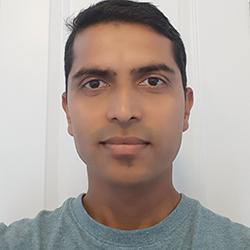My research and academic interests include Stem cells and Developmental Biology, Embryology, Epigenetics and Molecular Biology. Previously, I worked on diagnostic and therapeutic approaches to prevent the transmission of heritable mitochondrial DNA (mtDNA) mutation disorders. Using techniques such as pre-implantation genetic diagnosis (PGD) and germline nuclear transfer, I investigated ways to minimise the carry-over of mtDNA mutations from mothers to their offspring. I also studied the epigenetic regulation of cellular identity by investigating factors that prevent CpG islands from DNA methylation.
Currently, I am working in the group of Azim Surani at Gurdon Institute studying the mechanisms of early human development with a focus on origin and specification of human primordial germ cells (hPGCs) in relation to their surrounding tissues. PGCs are the precursors of sperm and oocytes that originate between second- and third-week post fertilization. These PGCs, after specification, proliferate, mature and undergo series of epigenetic changes while migrating into gonads and eventually give rise to male or female gametes. I am particularly interested in germline competency, origin and specificationof PGCs and ways to prolong their development. Using human pluripotent stem cells, we have developed a three-dimensional (3-D) model of post-implantation human development that recapitulates crucial features of human gastrulation and early neurulation, including specification of hPGCs and emergence of neuromesodermal progenitors (NMP).
The foundation of human body plan is laid during the first few weeks after implantation. This period is known as the “black box” of human development as we cannot study the events occurring during this period directly. Events such as formation of bilaminar disc embryos followed by a trilaminar disc, transition from epithelial to mesenchymal (EMT) cells giving rise to the primitive streak, establishment of the three germ layer derivatives (ectoderm, mesoderm and endoderm), specification of PGCs and emergence of neuronal precursors occur between second- and fourth-week post fertilization. However, due to technical and ethical challenges, we cannot study these mechanisms in vivo or ex vivo. Therefore, most of our knowledge of early human development is based on animal studies, which is mechanistically different from humans. To investigate these phenomena in humans, we require physiologically relevant in vitro models to recapitulate the events of early human development in relation to surrounding tissues. Using human embryonic stem cells, I am interested to study mechanisms of early human development that could mimic crucial features of human gastrulation and early neurulation.


